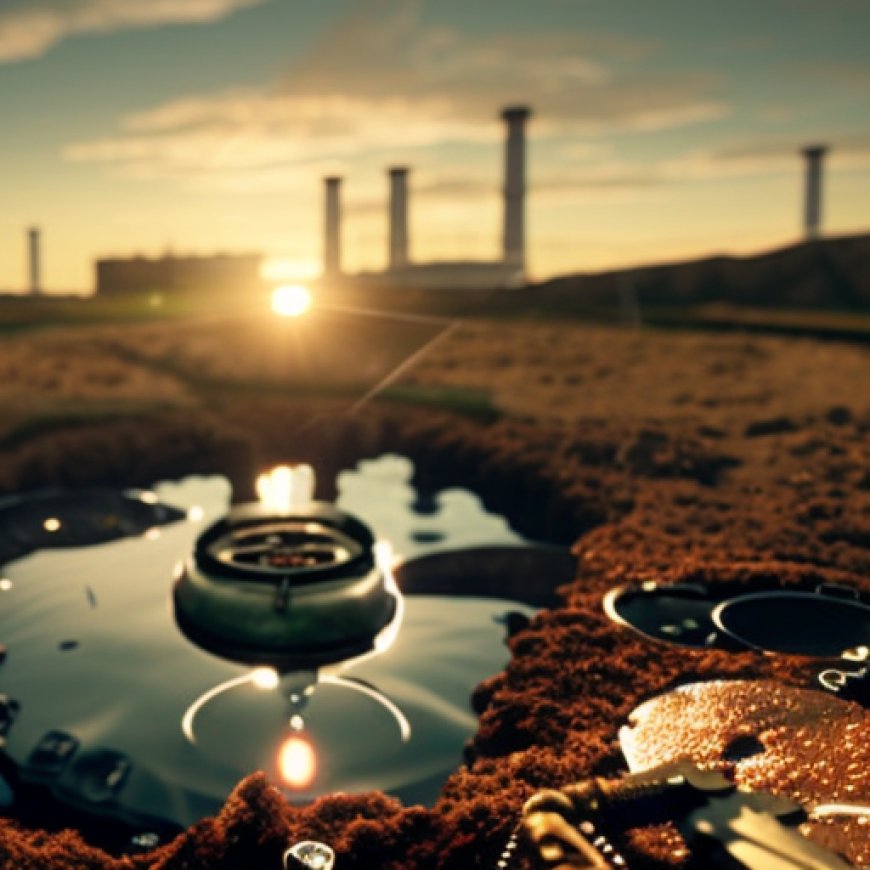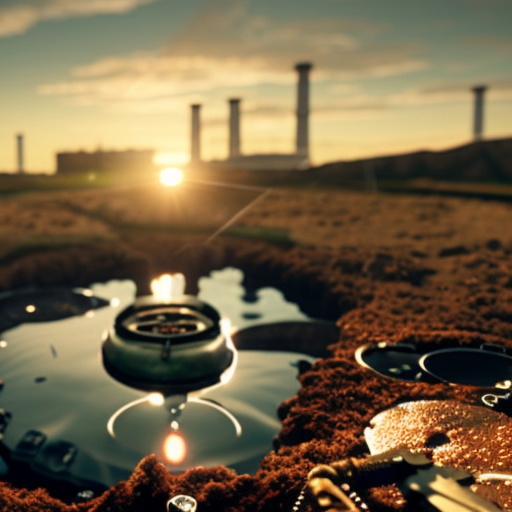John Cockerill and Tomorrow Water Join Forces to Boost Wastewater Treatment Efficiency and Biogas Production
John Cockerill and Tomorrow Water Join Forces to Boost ... PR Newswire


John Cockerill and Tomorrow Water Join Forces to Boost Wastewater Treatment Efficiency and Biogas Production
LIÈGE, Belgium and ANAHEIM, Calif., July 27, 2023 /PRNewswire/ —
In response to the ever-increasing demand for sustainable technologies that reduce the cost of wastewater treatment and sludge management through transformation of wastewater plants into resource recovery and green energy production facilities, John Cockerill and Tomorrow Water have signed a global partnership agreement to share and promote two technologies within their respective solution portfolios and markets:
- John Cockerill will market and provide Tomorrow Water’s Thermal Hydrolysis Process (THP)/HydroThermal Carbonization (HTC) system “Draco
 ”.
”. - Tomorrow Water will market and provide John Cockerill Environment’s Continuous Flow Aerobic Granular Sludge (AGS) process “BeFlow® AGS.”
Draco is a modular sludge pretreatment solution which reduces sludge volumes, boosts biogas generation, and provides additional technical and implementation benefits. BeFlow® AGS is an innovative and highly retrofittable biological wastewater treatment technology which densifies and granulates activated sludges to reduce treatment footprints and maximize efficiency. Compared to conventional systems, BeFlow® AGS significantly reduces the required bioreactor and clarifier volumes for both greenfield and legacy plants. With its ability to handle peak wet weather flows and its continuous-flow design, the Beflow® AGS process is particularly adapted to retrofitting and expanding existing treatment facilities while overcoming the limitations of other granulation processes.
is a modular sludge pretreatment solution which reduces sludge volumes, boosts biogas generation, and provides additional technical and implementation benefits. BeFlow® AGS is an innovative and highly retrofittable biological wastewater treatment technology which densifies and granulates activated sludges to reduce treatment footprints and maximize efficiency. Compared to conventional systems, BeFlow® AGS significantly reduces the required bioreactor and clarifier volumes for both greenfield and legacy plants. With its ability to handle peak wet weather flows and its continuous-flow design, the Beflow® AGS process is particularly adapted to retrofitting and expanding existing treatment facilities while overcoming the limitations of other granulation processes.
Introduction to Markets
With John Cockerill Environment’s headquarters in Belgium, and its position and influence within the European market, Tomorrow Water’s Draco technology will be introduced to clients and projects in Europe. Meanwhile, Tomorrow Water, based in California, will carry John Cockerill’s BeFlow® AGS process within its core markets, the United States and South Korea.
technology will be introduced to clients and projects in Europe. Meanwhile, Tomorrow Water, based in California, will carry John Cockerill’s BeFlow® AGS process within its core markets, the United States and South Korea.
Quotes from Company Representatives
Mr. Mohamed Abdelbadie, Vice President of Tomorrow Water commented, “We are excited to partner with John Cockerill as we both believe that the fastest way to help create a truly sustainable world is to share innovative ideas and offer world class solutions to the broader market. The two companies share common values of trust, cooperation, and mutual desire to help our industry as a whole. Tomorrow Water is truly eager to see this partnership grow as we continue to develop additional opportunities that accelerate our mutual growth.”
Mr. Alain Desvignes, Head of John Cockerill Environment’s Water Business Line said, “Partnering with Tomorrow Water increases our capacity to scale-up and quickly respond to a rapidly changing technological landscape and emerging needs. Integrating Tomorrow Water’s thermal hydrolysis into LysoThane®, our high-performance sludge digestion process to produce renewable methane, will help reduce sludge volumes and further increase the production of biogas from digestible biomass. All while the commercialization by Tomorrow Water of our BeFlow® AGS in the USA and South Korea will be a key milestone in the growth strategy of this unique, 100% biological, compact, and low-energy process reducing the size and increasing the treatment capacity of wastewater treatment plants.”
About Tomorrow Water
Through innovative technology and thought leadership, Tomorrow Water is minimizing the global environmental impact of wastewater treatment, while delivering sustainable, practical, and economical solutions. Tomorrow Water is committed to building sustainable waste and wastewater management systems, integrating low-energy wastewater treatment, energy production and other crucial elements of modern infrastructure.
About John Cockerill
Driven since 1817 by the entrepreneurial spirit and thirst for innovation of its founder, the John Cockerill Group develops large-scale technological solutions to meet the needs of its time: facilitating access to fossil free energies, enabling sustainable industrial production, preserving natural resources, contributing to greener mobility, enhancing security, and installing essential infrastructures. With over 6,500 employees, John Cockerill achieved a turnover of € 1,046 billion in 2022 in 24 countries, on 5 continents.
John Cockerill’s Environment Sector
John Cockerill’s Environment Sector designs and supplies treatment technologies for water, solids, and waste as well as air, gas, and odors. Based on its innovative and partnership driven culture, John Cockerill Environment develops and commercializes technologies and process solutions addressing municipal and industrial markets worldwide. For the deployment of its solutions on international markets, John Cockerill Environment benefits from the global footprint of the Group, while its agile organization allows for the rapid industrialization of its products and solutions.
SDGs, Targets, and Indicators
1. Which SDGs are addressed or connected to the issues highlighted in the article?
- SDG 6: Clean Water and Sanitation
- SDG 7: Affordable and Clean Energy
- SDG 9: Industry, Innovation, and Infrastructure
- SDG 12: Responsible Consumption and Production
2. What specific targets under those SDGs can be identified based on the article’s content?
- SDG 6.3: By 2030, improve water quality by reducing pollution, eliminating dumping and minimizing release of hazardous chemicals and materials.
- SDG 7.2: By 2030, increase substantially the share of renewable energy in the global energy mix.
- SDG 9.4: By 2030, upgrade infrastructure and retrofit industries to make them sustainable, with increased resource-use efficiency and greater adoption of clean and environmentally sound technologies and industrial processes.
- SDG 12.4: By 2020, achieve the environmentally sound management of chemicals and all wastes throughout their life cycle, in accordance with agreed international frameworks, and significantly reduce their release to air, water and soil in order to minimize their adverse impacts on human health and the environment.
3. Are there any indicators mentioned or implied in the article that can be used to measure progress towards the identified targets?
The article does not explicitly mention any indicators. However, some possible indicators that can be used to measure progress towards the identified targets include:
- Reduction in sludge volumes
- Increase in biogas generation
- Reduction in treatment footprints
- Maximization of efficiency in wastewater treatment
- Reduction in required bioreactor and clarifier volumes
- Ability to handle peak wet weather flows
Table: SDGs, Targets, and Indicators
| SDGs | Targets | Indicators |
|---|---|---|
| SDG 6: Clean Water and Sanitation | 6.3: By 2030, improve water quality by reducing pollution, eliminating dumping and minimizing release of hazardous chemicals and materials. | – Reduction in sludge volumes – Increase in biogas generation |
| SDG 7: Affordable and Clean Energy | 7.2: By 2030, increase substantially the share of renewable energy in the global energy mix. | – Increase in biogas generation |
| SDG 9: Industry, Innovation, and Infrastructure | 9.4: By 2030, upgrade infrastructure and retrofit industries to make them sustainable, with increased resource-use efficiency and greater adoption of clean and environmentally sound technologies and industrial processes. | – Reduction in treatment footprints – Maximization of efficiency in wastewater treatment – Reduction in required bioreactor and clarifier volumes |
| SDG 12: Responsible Consumption and Production | 12.4: By 2020, achieve the environmentally sound management of chemicals and all wastes throughout their life cycle, in accordance with agreed international frameworks, and significantly reduce their release to air, water and soil in order to minimize their adverse impacts on human health and the environment. | – Reduction in sludge volumes – Increase in biogas generation |
Behold! This splendid article springs forth from the wellspring of knowledge, shaped by a wondrous proprietary AI technology that delved into a vast ocean of data, illuminating the path towards the Sustainable Development Goals. Remember that all rights are reserved by SDG Investors LLC, empowering us to champion progress together.
Source: prnewswire.com

Join us, as fellow seekers of change, on a transformative journey at https://sdgtalks.ai/welcome, where you can become a member and actively contribute to shaping a brighter future.







